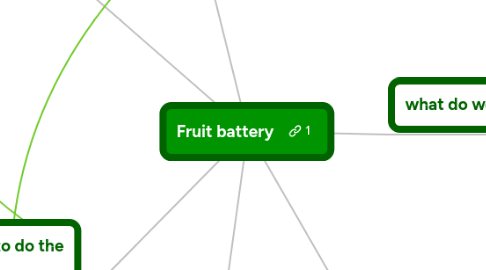Fruit battery
by liu chia chun

1. Materials needed
1.1. Lemon
1.2. light bulb
1.3. Copper nail
1.4. Zinc nail
1.5. Wire
2. Hypothesis
2.1. The lemon is able to power the light bulb.
3. What we know about fruits being used as batteries?
3.1. Acidic fruits can produce electricity with chemical reactions with certain elements.
3.2. Vegetables can also be used as batteries.
3.3. Only fruits and vegetables that contain acid or other electrolyte can be used as fruit batteries.
4. Steps needed to do the experiment.
4.1. 1.Set the fruit on a table and gently roll it around to soften it up. You want the juice to be flowing inside the fruit without breaking its skin. Alternatively, you can squeeze the fruit with your hands.
4.2. 2.Insert the zinc and copper nails into the fruit so that they are about 2" or 5 cm apart. You don't want them to be touching each other. Avoid puncturing through the end of the fruit.
4.3. 3.Remove enough insulation from the leads of the light (about 1") so that you can wrap one lead around the zinc nail and one lead around the copper nail. If you like, you can use electrical tape or alligator clips to keep the wire from falling off the nails.
4.4. 4.When you connect the second nail, the light will turn on!
5. Reasons for the hypothesis
5.1. The lemon is acidic which helps their juice to conduct electricity.
5.2. Fruits have charges that can be converted to negative and positive charges through copper and zinc materials.
5.3. The zinc is oxidized inside the fruit, exchanging some of its electrons in order to reach a lower energy state, and the energy released provides the power
6. what do we need to know?
6.1. How much volts are there in a fruit?
6.2. Can fruits be used to make a television function?
6.3. How long can the "battery" last?
6.4. Does the level of sourness affect the level of voltage in a fruit?
6.5. What type fruits can be used as batteries?


